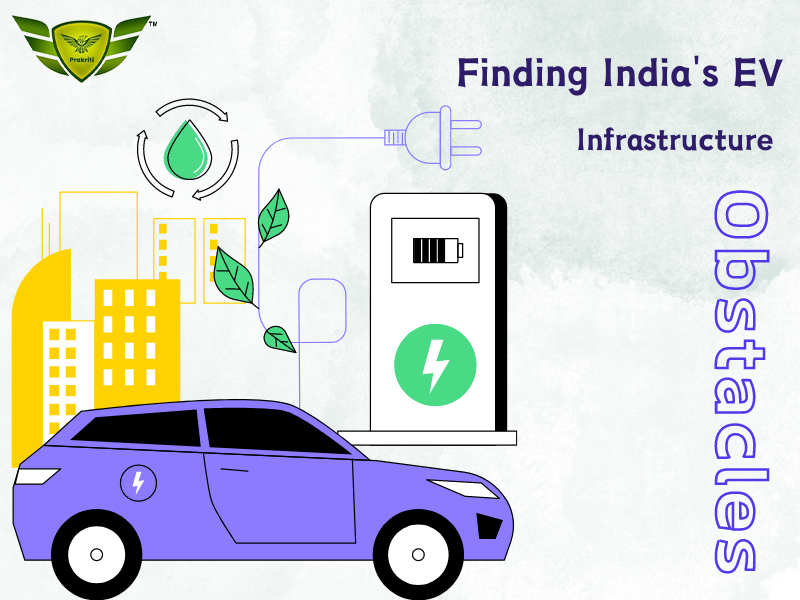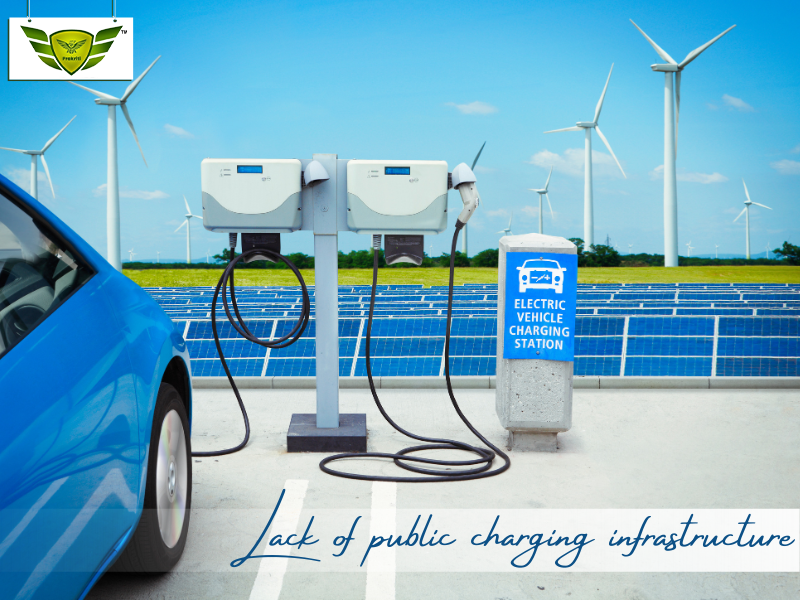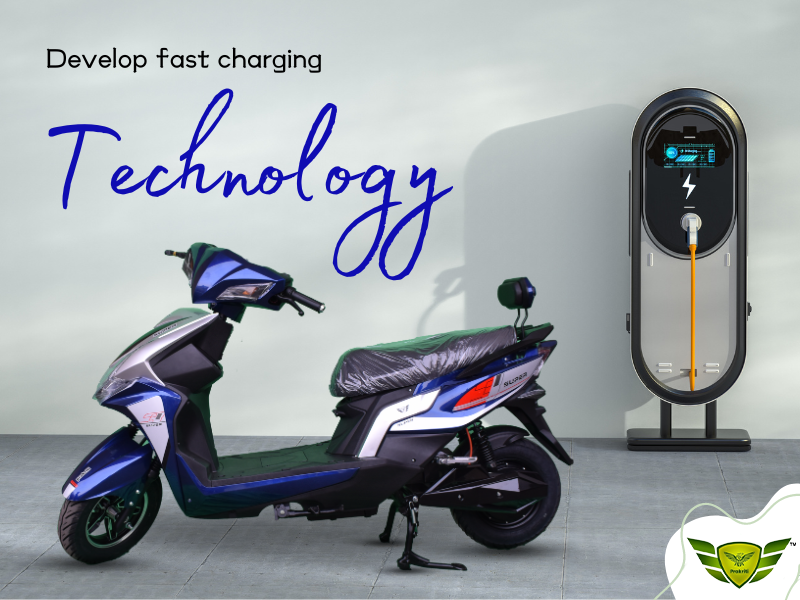India’s EV charging infrastructure needs immediate attention. In order to encourage the further adoption of electric vehicles in India, a strong national charging network is essential. This is because, in addition to providing EV owners with fast and speedy vehicle charging, it will also—and maybe more importantly—allay drivers’ fears regarding their vehicles running out of gas. This is crucial since range anxiety remains the main obstacle to the widespread adoption of Venturous initiatives for EV charging infrastructure have been started by the Indian government. Most notably, incentives for EV adoption and the expansion of EV charging infrastructure are offered under the Faster Adoption and Manufacturing of (Hybrid &) Electric Vehicles (FAME) plan. By establishing the National Electric Mobility Mission Plan (NEMMP), which provides incentives for EV sales, the government has further accelerated the adoption of EVs.
Nevertheless, private sector investment is necessary for these government measures to succeed in building charging infrastructure. It is not possible for the government to establish a strong and comprehensive charging network by itself. The construction of EV charging infrastructure should also involve private sector entities such as resident welfare associations (RWAs) and charging infrastructure providers.
Finding India's EV Infrastructure Obstacles:
Table of Contents
Toggle
India has set a lofty goal by 2030, all forms of transportation would be electrified. India will require 46,000 EV charging infrastructure nationwide in order to reach this goal. The following illustrates India’s existing EV infrastructure situation, We examine three factors that are preventing India’s EV infrastructure from developing at the moment.
Inadequate power grid:
India’s increasing power consumption has already placed a great deal of strain on the power grid; it is projected to rise by 9–12% in the first half of 2023 alone. This can be made worse by adding EVs to the grid, which will lead to frequent power outages. This is particularly valid for rural regions.
This lack of power has the potential to deter EV adoption by undermining the confidence of potential EV owners regarding the dependability of their vehicle’s charging. Decreased trust among consumers also deters private sector investment in EV charging infrastructure.
Lack of public charging infrastructure:

By 2030, nine cities will have 46,397 public charging stations constructed, according to the Bureau of Energy Efficiency (BEE). But as of the now, India only has 5, 234 charging stations dispersed throughout the country. Retail establishments, proprietors of small businesses, and RWAs can still be reluctant to offer public charging stations on their property even with government pressure. They are worried about how much capital these stations will need. They might not be aware of the advantages these stations could have for their companies. However, prospective EV owners continue to worry about the range of their cars in the interim.
Geographical diversity:
India is a large country with a varied geography. Different charging-related concerns are needed for its varied geography, which ranges from plains to mountains fed by rain. For instance, a portion of the infrastructure for EV charging must to be resilient to waterlogging, which happens frequently in some places four months out of the year.
Furthermore, rural areas may need a whole different EV charging infrastructure than metropolitan areas due to differences in population density and travel patterns. Installing and maintaining charging stations in remote locations may be more difficult because to this enormous gap between rural and urban areas. To make matters worse, there might not be enough EVs in these rural locations to make the expenditure worthwhile. These problems call for creative answers, which could range from creating quick charging technologies to utilizing renewable energy sources.
Solution to revolutionize Ev charging infrastructure in india:
These problems call for creative answers, which could range from creating quick charging technologies to utilizing renewable energy sources.
India is tackling the difficulties of building an effective and sustainable network of EV charging stations in a number of ways. The government is actively pushing the use of renewable energy to satisfy the rising demand for power, expanding the infrastructure for public charging, offering incentives for private sector investment, and creating fast charging and intelligent software solutions.
The four most well-known efforts to transform EV charging in India are examined here:
Increase public charging infrastructure:
Along highways, in cities, and in public spaces, the Ministry of Power is building EV charging stations in India in partnership with organizations like the BEE.
The Ministry of Heavy Industries has approved the building of 2,877 EV charging infrastructure throughout several states, in addition to 1,576 stations spread over 16 highways and 9 expressways, as part of the FAME India plan. Range concern will be greatly reduced if there are enough charging stations along India’s key routes, which span 10,275 kilometres’ addition, the Energy Efficiency Services Limited (EESL) project of the Ministry of Power has incentivized private entities to construct 810 electric vehicle charging stations. Additionally, the government is providing incentives for companies, retail establishments, parking lot managers, and RWAs to install EV charging stations on their property.
The government is streamlining the installation procedures and increasing public awareness of the advantages of charging stations for companies. To meet its targets for EV charging infrastructure, India has to keep offering these incentives. The government is streamlining the installation procedures and increasing public awareness of the advantages of charging stations for companies. To meet its targets for EV charging infrastructure, India has to keep offering these incentives.
Integrate renewable energy:
Including renewable energy sources in the EV charging infrastructure can reduce costs and increase sustainability. It can lessen reliance on fossil fuels, which lowers pollution and the effects of global warming. It can also lessen the likelihood of power outages and lower the cost of EV charging for EV owners. India has a lot of potential for renewable energy because of its plentiful sunshine, flowing rivers, and favourable wind patterns. Effective use of these renewable energy sources is being made by the government. The government intends to raise the capacity of renewable energy generation to 500 GW by 2030, which would account for 50% of the world’s energy needs. If this rise were to occur, pollution would be decreased and EV chargers would always have access to electricity.
Develop fast charging technology:

EV charging times can be decreased by developing fast-charging technology and the software that goes along with it. Fast charges take less than an hour, whereas slow chargers can take one to five hours. This can help reduce range anxiety, particularly when traveling long distances. The overall number of EV charging infrastructure needed can be reduced by using fast-charging technologies. A small number of fast-charging stations can offer the same level of service as a large number of traditional charging stations because they can charge an EV in a matter of minutes. The nation-wide implementation of fast-charging infrastructure is being funded by the Indian government. Fast-charging technology is being developed by private companies as well; numerous companies have installed fast-charging stations across the nation.
Incentivize private sector investment:
The importance of the private sector in creating EV charging infrastructure is acknowledged by the Indian government. Several initiatives and policies have been adopted by the government to encourage private sector investment. The FAME scheme is one of these programs, wherein the Indian government has provided oil firms with Rs 800 crore to establish electric vehicle charging stations. In order to further stimulate private investment, the government has now permitted 100% Foreign Direct Investment (FDI) in the EV charging infrastructure market. These solutions may significantly affect India’s future use of electric vehicles.
India’s future with the modern charging infrastructure:
We must build a strong charging infrastructure for Electric Rickshaw, Electric Scooter and other E-vehicles in India before it can successfully switch to this mode of transportation. India’s government is striving to integrate renewable energy sources, encourage private investment, and expand the number of public EV charging stations despite the country’s numerous obstacles to building a dependable and effective charging network. With these steps, India may become a global leader in clean energy and sustainable transportation. The construction of EV charging infrastructure in India has the potential to improve public health, raise living standards, generate economic growth, and open up new job opportunities. India has the potential to inspire other nations and pave the way for a more sustainable and environmentally friendly future if it succeeds in achieving its objectives.
Corporate Office
17 Floor, Room No. 10 Chatterjee International Centre 33A, Jawaharlal Nehru Road Park Street Area, Kolkata West Bengal- 700071
Landmark- Beside Metro Bhavan
Customer Care Number
+91 93309 00485
aftersales@bigbullerickshaw.in

